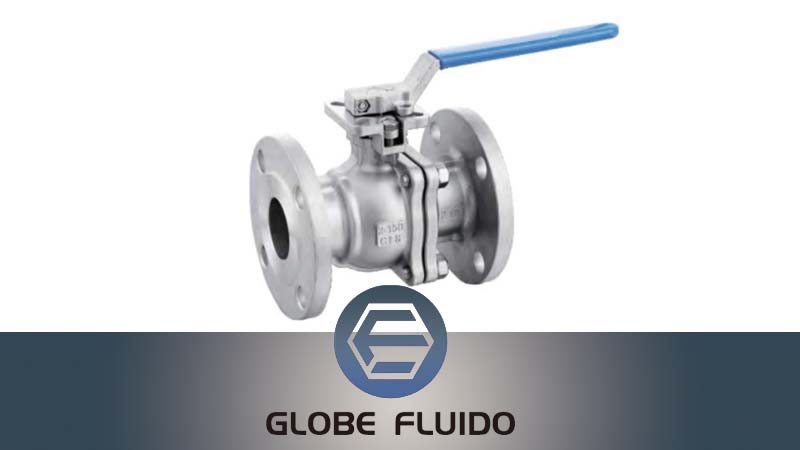Export Office: 21Floor, No.5 Nanhai Zhi Road,Qingdao, Shandong ,China
Work Shop: Beian Industrial zone, Qingdao,Shandong,China
+86 532 88550858
Martin
Inquiry now
Flange connections are critical components in various industrial systems, ensuring the secure and efficient transport of fluids and gases. When these connections fail, it can lead to gasket blowouts, resulting in costly repairs and potential safety hazards.
Prevention Techniques for Gasket Blowouts
Choosing the Right Gasket Material
To prevent gasket blowouts, it is imperative to select the appropriate gasket material tailored to the specific application. Gaskets are manufactured from various materials, including rubber, metal, composite, and PTFE. Each of these materials possesses distinct properties that render them suitable for particular environments. For instance, PTFE gaskets exhibit high resistance to chemicals and can withstand elevated temperatures, making them ideal for aggressive chemical settings. Conversely, rubber gaskets offer flexibility and optimal sealing performance under lower temperature and pressure conditions. Therefore, comprehending operational variables such as fluid type, pressure levels, and temperature ranges is essential for an informed selection process.
Serving more than 35 countries and regions for more than 20 years, FLUIDO is a top producer and supplier of steel valves, fittings, and flanges. Apart from producing its own flanges, FLUIDO forged partnerships with Shandong and Hebei industries to offer a comprehensive array of products and comprehensive one-stop sourcing services to its clientele.

Ensuring Correct Torque Levels
Proper torque application is vital to achieving a leak-proof seal in flange connections. Bolts must be tightened to specific torque values to ensure even compression of the gasket. Using torque wrenches and tensioners can help apply the correct torque levels consistently. These tools should be regularly calibrated to maintain accuracy. Torque wrenches provide precise control over the amount of force applied to the bolts, preventing over-tightening or under-tightening. Tensioners can also distribute the load evenly across the flange, reducing the risk of uneven pressure and gasket failure.
Using Torque Wrenches and Tensioners
Torque wrenches and tensioners are essential tools in achieving uniform bolt tensioning. Torque wrenches measure the amount of torque applied, ensuring that it meets the manufacturer’s specifications. They come in various types, including click-type, beam-type, and electronic torque wrenches. Choosing the right type of torque wrench depends on the specific application and required precision. Tensioners, on the other hand, use hydraulic or mechanical means to stretch the bolts evenly, providing a more uniform distribution of pressure. This technique is particularly useful in high-pressure flange connections where precise loading is critical.
Regular Calibration of Tools
Calibration ensures that torque wrenches and tensioners maintain their accuracy over time. Regular calibration checks should be part of routine maintenance to guarantee consistent performance. Calibration involves comparing the tool’s readings against a known standard and adjusting it as necessary. This process helps identify any deviations from the specified torque values and corrects them before they lead to gasket failures. Using a properly calibrated tool enhances reliability and reduces the risk of under or over-pressurizing the gasket.
Preparing the Flange Surface
Proper preparation of flange surfaces is crucial for effective gasket sealing. Cleaning and inspecting the surfaces can prevent common issues such as contamination, corrosion, and surface irregularities. Clean surfaces ensure that the gasket can adhere properly and form a tight seal. Inspection helps identify any defects or damage that could compromise the integrity of the connection.
Cleaning and Inspecting Surfaces
Before installation, flange surfaces should be thoroughly cleaned to remove any debris, rust, or contaminants. Cleaning agents and tools appropriate for the flange material should be used to avoid causing additional damage. After cleaning, the surfaces should be inspected for defects such as scratches, dents, or corrosion. Visual inspection can detect obvious problems, but advanced techniques like dye penetrant testing or ultrasonic inspection may be necessary for identifying subsurface defects. Ensuring clean and defect-free surfaces is essential in creating reliable flange connections.
Utilizing Surface Finish Gauges
Surface finish gauges measure the roughness of flange faces, helping to determine whether they meet the required smoothness standards. Gaskets need a certain level of surface finish to create an effective seal. Rough or uneven surfaces can lead to leaks and gasket failure. Surface finish gauges provide quantitative data on the condition of the flange faces, allowing for accurate assessment and necessary corrective actions. Using surface finish gauges during routine maintenance checks can help maintain the proper sealing conditions and extend the lifespan of gaskets.
Environmental Considerations
Environmental factors such as temperature variations and pressure fluctuations can significantly impact gasket performance. Flanges and gaskets must be designed to withstand these conditions without compromising their sealing capabilities.
Accounting for Temperature Variations
Temperature variations can cause thermal expansion and contraction in flange materials and gaskets. These changes can affect the compression and seal integrity of the gasket. Materials that can handle the expected temperature ranges should be selected to prevent thermal stress. For instance, metal gaskets may be more suitable for high-temperature environments, while rubber gaskets are better for lower temperatures. Understanding the operational temperature ranges and choosing materials that can withstand these variations is crucial in preventing gasket blowouts.
Controlling Pressure Fluctuations
Pressure fluctuations can create dynamic stresses on gaskets, leading to their failure. Fluctuating pressures can cause the gasket to deform and lose its sealing capability. Implementing pressure control mechanisms such as pressure regulators and safety valves can help maintain stable pressure levels. Monitoring pressure variations and taking corrective actions when necessary can prevent the adverse effects on gaskets and flange connections. Proper design and maintenance of the system to handle pressure fluctuations is essential in ensuring reliable operation.
Maintenance and Monitoring Best Practices
Effective maintenance and monitoring practices are crucial in preventing gasket blowouts and ensuring the long-term reliability of flange connections. Routine inspections, maintenance schedules, and predictive maintenance techniques can help identify potential issues before they lead to failures.
Routine Inspections and Maintenance Schedules
Regular inspections and maintenance routines are essential in maintaining the integrity of flange connections. Visual checks on gaskets and flanges can detect early signs of wear, damage, or misalignment. Scheduled maintenance activities such as cleaning, lubrication, and bolt re-tightening can prevent common issues that lead to gasket blowouts.
Visual Checks on Gaskets and Flanges
Routine visual inspections should include checking for signs of gasket degradation, such as cracks, swelling, or hardening. Inspecting flange faces for corrosion, pitting, or other surface irregularities is also crucial. Any signs of deterioration or damage should be addressed promptly to prevent leaks and blowouts. Visual inspections are relatively simple but effective in identifying issues that could compromise the integrity of the sealing system.
Pressure Testing for Leaks
Pressure testing involves applying a controlled pressure to the flange connection to check for leaks. This technique helps ensure that the gasket and flange assembly can withstand the operational pressures without failure. Pressure testing can be performed using hydrostatic or pneumatic methods, depending on the system’s requirements. Regular pressure testing can help identify potential weak points and provide confidence in the reliability of the connection.
Implementing Predictive Maintenance Techniques
Predictive maintenance uses advanced monitoring technologies to predict potential failures before they occur. Techniques such as vibration analysis, infrared thermography, and ultrasonic testing can detect early signs of wear, misalignment, or damage. Predictive maintenance allows for proactive interventions, reducing the risk of unexpected gasket blowouts and costly downtime. By continuously monitoring the condition of flange connections, technicians can schedule maintenance activities based on actual needs rather than fixed intervals, improving efficiency and reliability.
Real-Life Application Tips for Engineers and Technicians
Engineers and technicians play a crucial role in ensuring the reliability of flange connections and preventing gasket blowouts. Practical tips and best practices can help them achieve optimal performance and extend the lifespan of gaskets.
Training and Education: Providing training on proper installation techniques, torque application, and maintenance practices is essential. Knowledgeable technicians are better equipped to identify potential issues and implement effective solutions.
Using Quality Materials: Selecting high-quality gaskets and flange materials can significantly improve the reliability of connections. Investing in quality components reduces the risk of failures and extends the service life of the system.
Documentation and Record-Keeping: Keeping detailed records of maintenance activities, inspections, and calibration results helps track the condition of flange connections and plan future maintenance. Documenting any issues and corrective actions taken provides valuable insights for continuous improvement.
Collaboration and Communication: Encouraging collaboration and communication among team members can lead to more effective problem-solving and shared knowledge. Regular meetings and discussions on maintenance practices, challenges, and solutions can foster a culture of continuous improvement.
By implementing these techniques and best practices, engineers and technicians can ensure the safe and efficient operation of flange connections, preventing costly gasket blowouts and maintaining the reliability of industrial systems.
For the sake of meeting strict quality requirements and industry standards, FLUIDO is certified to the international ISO9001 quality system standard and all products are carefully tested before shipment. Since “trust originates from quality”, we have passed not only the European CE certification for our valves and flanges products, but also the ISO9001 assessment and registration by SGS for quality management.
Export Office: 21Floor, No.5 Nanhai Zhi Road,Qingdao, Shandong ,China
Work Shop: Beian Industrial zone, Qingdao,Shandong,China
+86 532 88550858
Martin
© 2020 Qingdao Fluido Industrial Co.,Ltd. All Rights Reserved. Qingdao fluido valve

